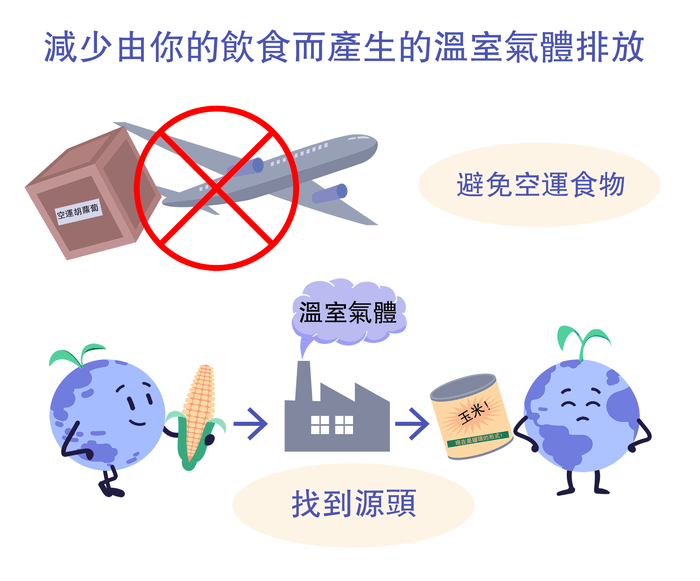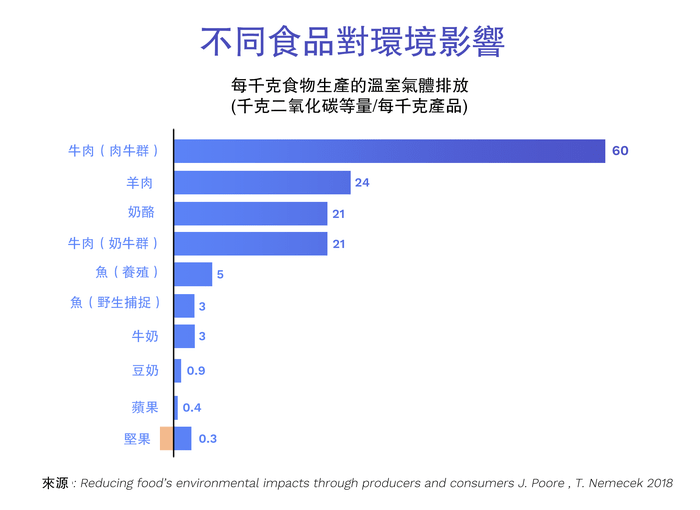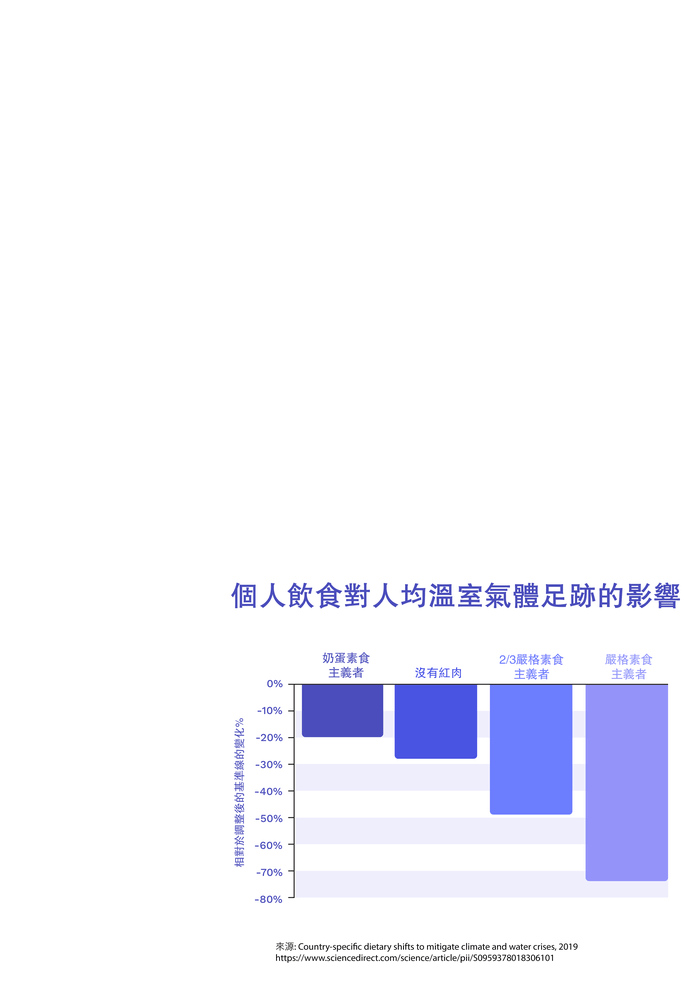可持續飲食習慣:甚麼是健康和可持續的飲食
5 一分鐘閱讀
更新於: 2021年04月05日16:45:05 格林威治標準時間
作為個人,你將如何為解決氣候變化做出貢獻?一個人的行為真的可以對我們的星球產生影響嗎?在本課程中,我們將探索個人減少碳足蹟的方式,並考慮此類行動在解決氣候變化方面的有效性。首先,讓我們看看我們的飲食如何影響我們周圍的世界。
我們的 飲食 對氣候變化有很大影響,因為全球 人造溫室氣體 排放的 26% 來自食物的生產和分配。這包括食品的運輸和包裝
。但是,應該指出的是,食品運輸僅佔這些排放的一小部分,在歐盟中僅佔食品生產排放的6%
,在美國中僅佔食品生產排放的5.1%
。
以下餅圖分解了全球 食物生產 每年釋放的137億噸 二氧化碳 :
(注意:供應鏈包括食品加工(將農場的收成轉換為最終產品),運輸,零售和包裝。)
我們應該改變我們的飲食嗎?
Different foods produce different amounts of greenhouse gas, so it makes sense that changing our diets can have a positive impact on our own carbon footprint .
Did you know that, on average, eating 100g of protein from beef produces 167x more greenhouse gas than eating 100g of protein from nuts ? Take a look at the chart below to see how other foods compare:
(Note: while growing nuts produces more greenhouse gases than some other plant-based foods, replacing cropland with nut trees increases the absorption of carbon from the atmosphere, thus lowering the total net emissions from the final product.)
減少碳足跡 的一種方法是採用以植物為主的飲食。 通過從飲食中去除動物產品,食品部門的溫室氣體 排放量可以減少近50%
。
即使這樣,仍然可以通過減少我們吃多少肉類,並轉移到影響較小的肉如雞肉和魚肉上來實現排放的顯著降低。
我們的食物是如何到達我們的餐盤上的?
While the transport of food makes up only a small proportion of emissions (only 6% of emissions from the average diets in the EU and 5.1% in the US
), it still is an easy area in which to reduce emissions from the food supply chain
.
What can we do to reduce emissions from food transport and processing?
- 避免空運食物–短途飛機的運輸會排放約1,700 g二氧化碳/噸每千米。 相比之下,海上運輸每公里產生的\definition {溫室氣體}{greenhouse gas} 排放量最少,約為2 g二氧化碳/噸每千米
。
- 轉到源頭-避免使用\ definition {加工食品}{processed food},因為食品加工和包裝使用了大量\ definition {能源}{energy}。

減少你飲食中排放的技巧
How much do food miles matter?
While reducing how far your food has travelled can help reduce emissions in many cases, it is also important to consider how the food was produced in the first place .
For example, in cooler countries, energy is needed to keep sheep and cattle warm. Generally, this is not required in countries with a warmer climate .
Energy is also required to keep food fresh and cold. Some fruits and vegetables are preserved in cold storage for months so that they can be sold out of season .
Clearly, how far your food has travelled is not a reliable indicator of the carbon footprint of your food. Indeed, for beef production, transportation typically accounts for less than 1% of emissions ! In this case, it is not the location of where you buy your meat which makes its carbon footprint high, but the meat itself
.





